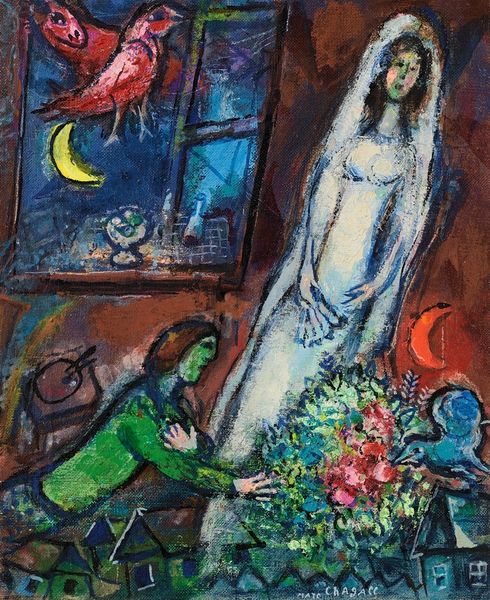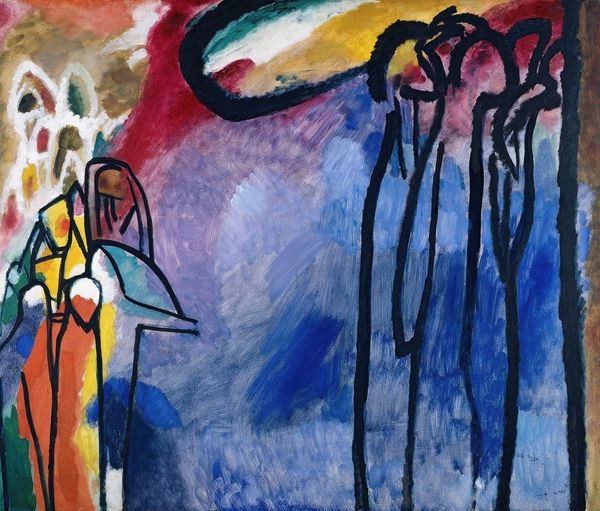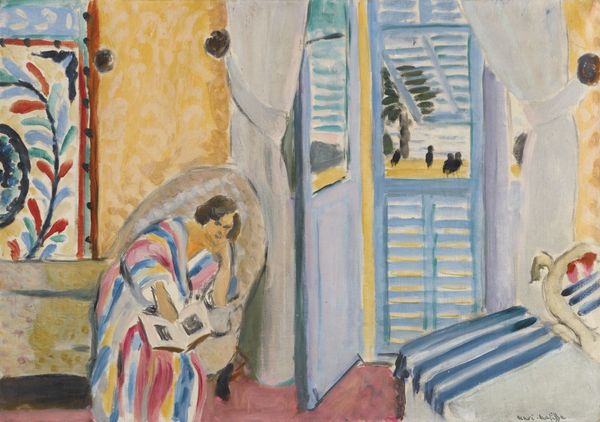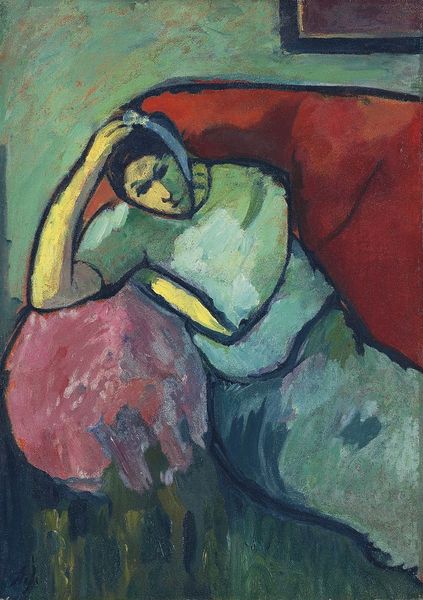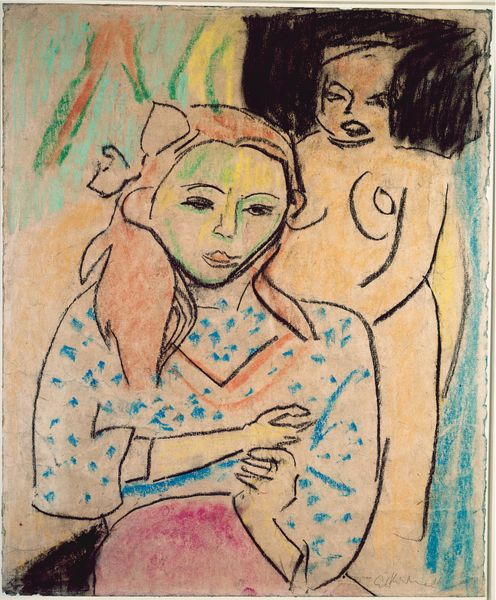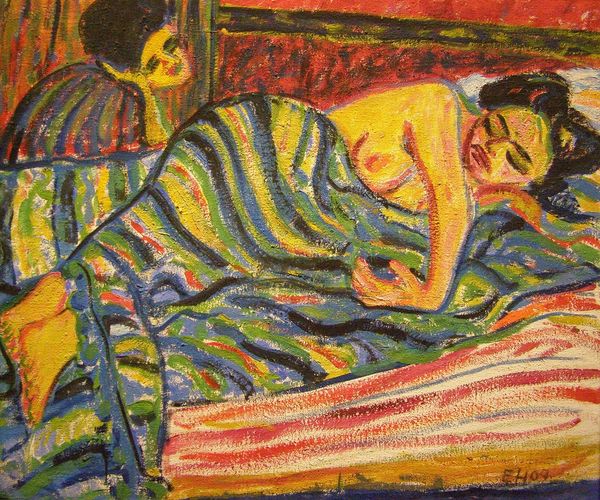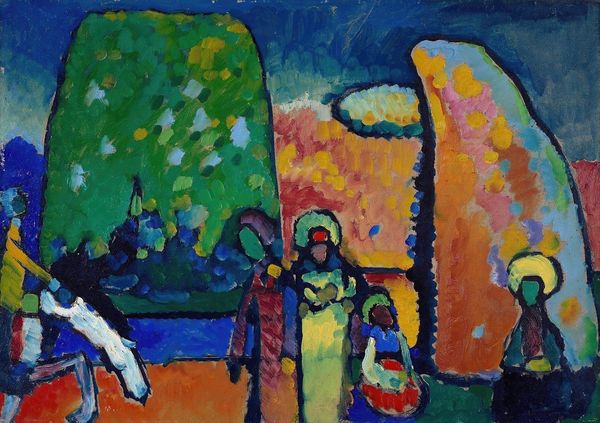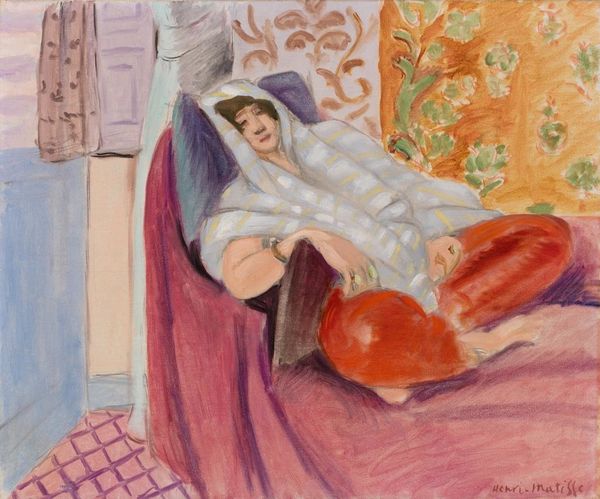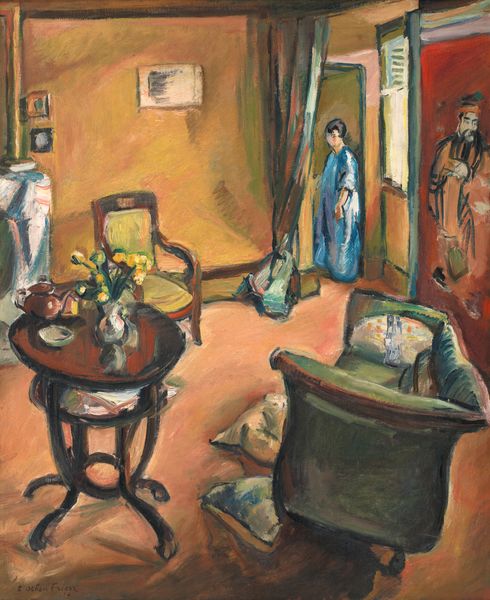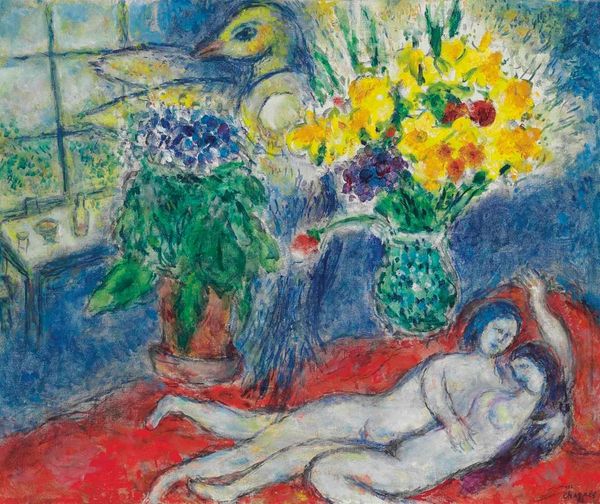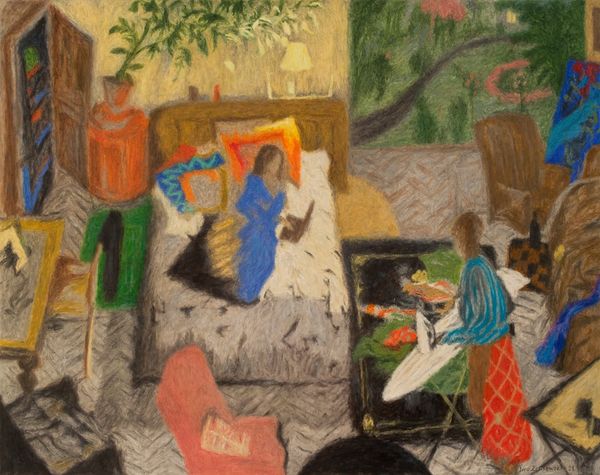
Copyright: Public Domain: Artvee
Editor: Here we have Edvard Munch’s 1930 oil on canvas, "Marat in the Bath and Charlotte Corday". The subject matter is startling; it’s hard to ignore the echoes of violence and betrayal in the composition. What do you make of this rather unsettling image? Curator: It's fascinating how Munch returns to this historical event, the assassination of Marat, decades after it occurred, filtering it through an expressionist lens. It’s less about historical accuracy and more about the psychology of violence, reflecting, perhaps, Munch's own anxieties and societal upheavals of the time. Consider the social context; the rise of fascism in Europe, the anxieties of the interwar period… could Munch be commenting on the political assassinations of his time, or the political climate that allows violence? Editor: That's interesting, so you are suggesting he is looking back and commenting on the contemporary society where he lived. I initially took it to be a comment solely on the French revolution. What do you make of the composition? Curator: Visually, it breaks from the Neoclassical idealization of death seen in David’s iconic “Death of Marat”. Munch emphasizes the raw, visceral reality. The colours are jarring, the brushstrokes frenzied. Munch isn't presenting a hero or a martyr but exploring the chaotic aftermath and the human cost. The figure of Charlotte Corday is also very interesting here, the fact that Munch portrayed the historical event focusing also on her, what message could he be possibly communicating to the public at that time? Editor: I see your point about the contrast with David's work, highlighting Munch's focus on the emotional rather than the heroic. Curator: Precisely. By examining the sociopolitical currents of the time and the public perception of violence, we gain a deeper understanding of Munch’s anxieties reflected in the canvas. Editor: Thank you, that’s a new way to interpret the piece; looking at it from the broader context rather than purely as an isolated artwork.
Comments
No comments
Be the first to comment and join the conversation on the ultimate creative platform.

